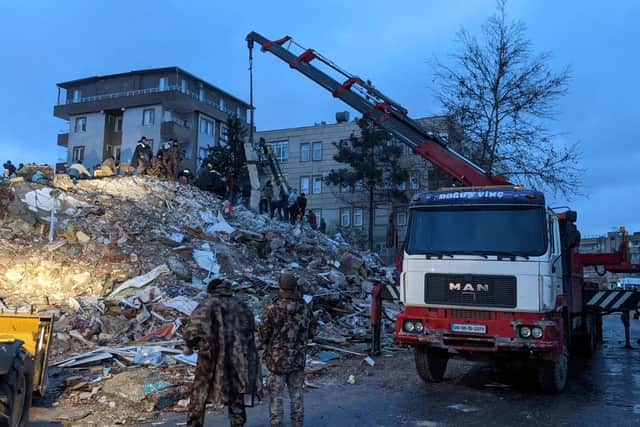Syria Turkey earthquake: How common are quakes and tsunamis in Europe?
Türkiye – where two major earthquakes hit on Monday near the border with Syria, killing at least 2,500 people – is one of the most seismically active countries on the continent.
Around 22,000 earthquakes, most of them small, took place in the country last year alone, according to the Gazi University Earthquake Engineering Application and Research Centre. The body calculated in 2022, at least one earthquake with a magnitude over 4.0 took place every three days.
Advertisement
Hide AdAdvertisement
Hide AdThe latest incidents, however, which measured 7.8 and 7.5 on the Richter scale respectively, are believed to have been among the biggest to occur in the country in hundreds of years.


Caused by the Arabian plate grinding against the Anatolian plate, the disaster near the city of Gaziantep is significantly higher than the next worst recorded in the area, when a quake of 7.4 magnitude was registered in August 1822, killing 7,000 people in the Syrian city of Aleppo alone.
However, this is not the first time in recent years that a significant earthquake has hit Türkiye.
Around 18,000 people died and tens of thousands more were injured when a previous major earthquake occurred in the town of Izmit, in the north of the country, in 1999.
Since then, the Turkish government has taken steps to try to protect its population. A building renovation program has been in place since 2012, which is aimed at improving the resilience of housing to earthquakes. In an ambitious move, the government pledged to retrofit or renew all high-risk buildings within the following 20 years. In Monday’s tragedy, the Turkish government said almost 3,000 buildings had been destroyed, with many people trapped under the rubble.


The incident affected a number of neighbouring countries, not least Syria, where rescuers have warned of a humanitarian disaster in an area of the country that is held by both rebel and government groups. However, movement was felt from as far away as Egypt, Lebanon or Cyprus.
In Italy, a tsunami warning was issued early on Monday morning as a result of the quake in Türkiye, with authorities initially telling people to move away from coastal areas. Trains were also suspended for a short period in southern Italy. However, that warning was later withdrawn. Tsunamis occur due to violent movement of the sea floor caused by earthquakes, which produces huge waves in different directions.
Dozens of small earthquakes, which cause minimal damage – or in many cases, are not even felt by people – occur in Europe every day. Last year, the most deadly was in Poland, where a quake of 5.5 on the Richter scale led to ten people killed.
Advertisement
Hide AdAdvertisement
Hide AdEuropean countries which are at the greatest risk of earthquakes include Greece, the south of Italy and Romania.
In the Pacific Ocean, in an area known as the 'Ring of Fire' where the vast majority of the world's earthquakes occur, the Pacific plate is subducted beneath the surrounding plates. The activity is close to the Pacific coasts of South America, North America and Kamchatka, and some islands in the western Pacific Ocean.
Comments
Want to join the conversation? Please or to comment on this article.